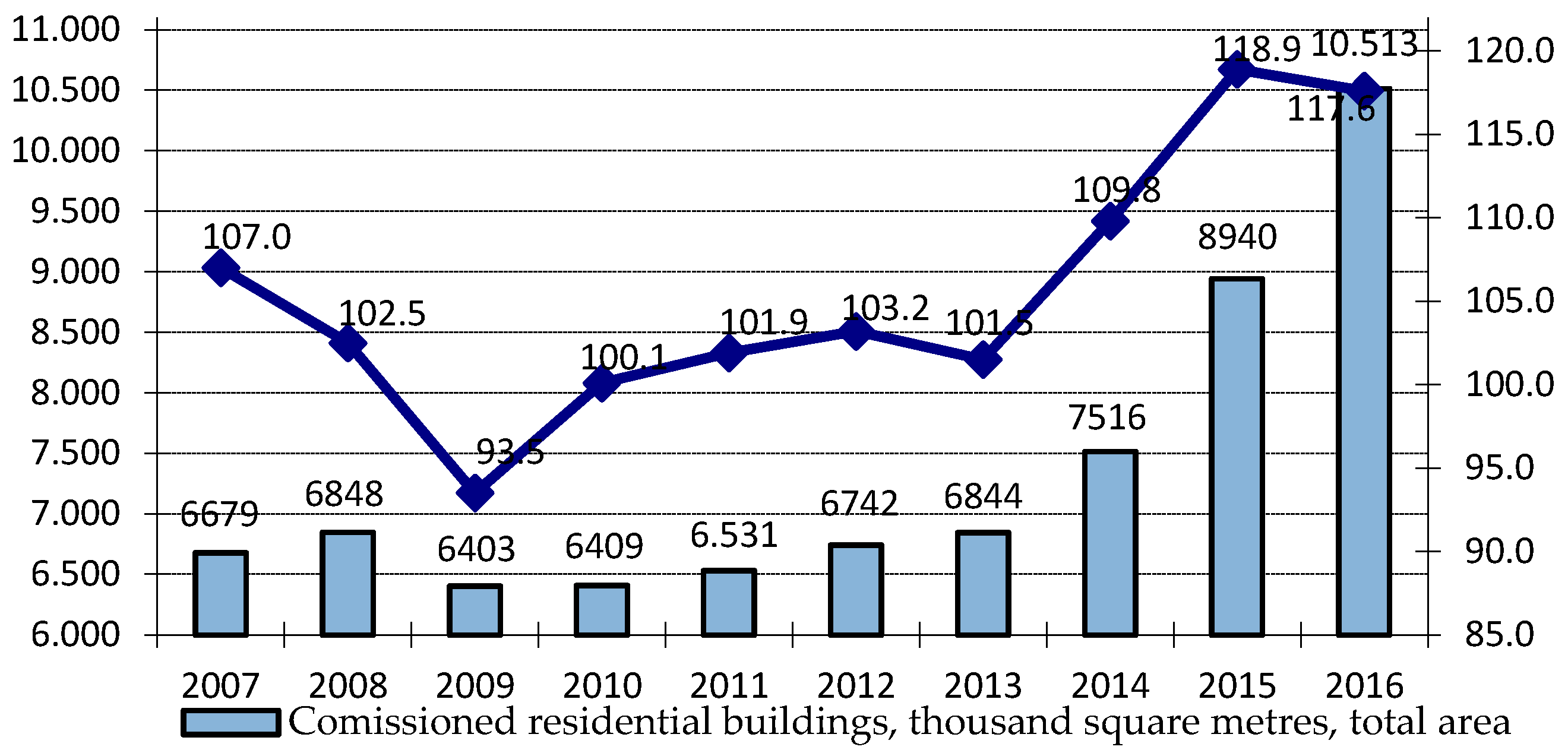Sustainable Built Environment in Kazakhstan: The Way towards Better IAQ †
Abstract
:1. Introduction
2. Current Situation of Sustainable Built Environment
2.1. Buildings
2.2. Existing Policies and Projects
2.3. Indoor Air Quality
3. Discussion
Acknowledgments
Conflicts of Interest
References
- ExxonMobil. The Outlook for Energy: A View to 2040; ExxonMobil: Irving, TX, USA, 2013. [Google Scholar]
- Sustainable Cities: Rapid Urbanisation and Sustainability in Kazakhstan—Exploring the Use of Novel Technologies and Research Methods to Address Environmental and Social Change; Sustainable Cities Workshop: Astana, Kazakhstan, 2015.
- UN Department of Economy and Social Affairs, 2014 Revision of the World Urbanisation Prospects. Available online: http://www.un.org/en/development/desa/publications/2014-revision-world-urbanization-prospects.html (accessed on 31 October 2018).
- Mohtashami, N.; Mahdavinejad, M.; Bemanian, M. Contribution of City Prosperity to Decisions on Healthy Building Design: A case study of Tehran. Front. Arch. Res. 2016, 5, 319–331. [Google Scholar] [CrossRef]
- Statistics Agency. Dynamics of the Main Indicators of Construction Activities in Kazakhstan; Statistics Agency: Astana, Kazakhstan, 2018. [Google Scholar]
- IEA Statistics. Available online: http://www.iea.org/statistics/statisticssearch/report/?year=2012&country=Kazakhstan&product=ElectricityandHeat (accessed on 31 October 2018).
- IEA. Key World Energy Statistics. 2014. Available online: http://www.iea.org/publications/freepublications/publication/keyworld2014.pdf (accessed on 31 October 2018).
- Balaban, O.; de Oliveira, J.A. Sustainable buildings for healthier cities: Assessing the co-benefits of green buildings in Japan. J. Clean. Prod. 2017, 163, S68–S78. [Google Scholar] [CrossRef]
- Ministry of Energy, Ecological Code of the Republic of Kazakhstan.
- Uyzbayeva, A.; Ibrayev, N.; Sharipova, D. Influence of the Building Envelope and Ventilation on Indoor Radon Concentration: Review of the Measurement Results in Low-Rise Dwellings Kazakhstan. 2017; Unpublished. [Google Scholar]
- Ministry of Health of RK, Sanitary-Epidemiological Requirements to the Maintenance and Operation of Residential and Other Premises Public Buildings.

| Existing Policies | Implemented Projects |
|---|---|
|
|
Publisher’s Note: MDPI stays neutral with regard to jurisdictional claims in published maps and institutional affiliations. |
© 2018 by the author. Licensee MDPI, Basel, Switzerland. This article is an open access article distributed under the terms and conditions of the Creative Commons Attribution (CC BY) license (http://creativecommons.org/licenses/by/4.0/).
Share and Cite
Uyzbayeva, A. Sustainable Built Environment in Kazakhstan: The Way towards Better IAQ. Proceedings 2018, 2, 1384. https://doi.org/10.3390/proceedings2221384
Uyzbayeva A. Sustainable Built Environment in Kazakhstan: The Way towards Better IAQ. Proceedings. 2018; 2(22):1384. https://doi.org/10.3390/proceedings2221384
Chicago/Turabian StyleUyzbayeva, Aigerim. 2018. "Sustainable Built Environment in Kazakhstan: The Way towards Better IAQ" Proceedings 2, no. 22: 1384. https://doi.org/10.3390/proceedings2221384
APA StyleUyzbayeva, A. (2018). Sustainable Built Environment in Kazakhstan: The Way towards Better IAQ. Proceedings, 2(22), 1384. https://doi.org/10.3390/proceedings2221384





